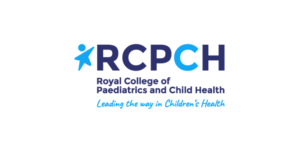Case study: The Royal College of Paediatrics & Child Health
State of Open: The UK in 2021
Phase Three: “The Value of Open”

 Dr Simon Chapman, Acute Consultant Paediatrician & Leader of the Digital
Dr Simon Chapman, Acute Consultant Paediatrician & Leader of the Digital
Synopsis
The RCPCH represents clinicians who work across the care of babies, children and adolescents. They have recently launched a digital version of growth charts, accurately calculating centiles for a child’s height, weight, BMI and head circumference through the use of open source. This was made possible by the transparent nature of open source and the opportunity for collaboration. But this is not just collaboration within the open source world, but with clinicians too. By actively encouraging clinicians to be involved and understand the process, they ensure that whatever is being created is fit for purpose.
9.1 The Royal College of Paediatrics and Child Health
Innovating in children’s healthcare
In conversation with Dr Simon Chapman, Acute Consultant Paediatrician and leader of the Digital
Growth Chart project for The Royal College of Paediatrics and Child Health (RCPCH)
About RCPCH
The RCPCH takes a holistic view of patient health and wellbeing, representing clinicians who work across the care of babies, children and adolescents. They provide career support for their members, as well as leadership and advocacy to government and the health authorities, and a range of programmes to improve child health. Recently they launched a digital version of the growth charts which are familiar to British parents as core elements of the Red Book, using open source to accurately calculate centiles for a child’s height, weight, BMI and head circumference.
Seeing an opportunity: the context for Digital Growth Charts API
Although we often think of the NHS as a single entity, its organisation and governance are relatively federated, and the IT systems which support it are themselves fragmented. The majority of services are provided by a handful of large providers such as Epic and Cerner, who offer a range of electronic healthcare record (EHR) packages. However, there are specific use cases – such as an accurate digital growth curve tool – where this market structure does not naturally support commercial development as it would – for instance – in A&E triage and processing. Simon and his colleagues represent an intriguing type of open source entrepreneur – the expert clinician and coder.
Open source in action
By embracing open source, the RCPCH[1] has been able to make faster progress in modernising the underlying thinking for this important diagnostic tool. The team’s ways of working have been agile and over the last 18 months they have gone from just a concept to MVP to a stabilised service for customers whereby accurate assessments of growth against normalised standards are delivered straight to the user and can be easily integrated into other interfaces simply and cheaply. The team uses GitHub to house their repositories, of which they have seven. A repository allows for dynamic conversation which can be scrutinized more thoroughly as every decision is made publicly. Different bits of code are tied to a single slot that is pasted in Kanban boards. Simon observes “this is the first time I’ve really seen the value of open source software”.
Digital Growth Charts API in practice: challenges and opportunities
The valuable characteristics of this open source software project have been about transparency as much as enlisting help through collaboration. Simon explains that, like him, a number of clinicians have been able to contribute to parts of the project alongside their full-time work precisely because of the open source model he and his colleagues have employed. A further enabler for this specifc, single-use case approach in terms of medical data is that the tool does not require the storage of patient data – it is at heart a piece of code to act as a sophisticated calculator.
Conclusion: just the beginning
The Digital Growth Charts API is exciting, and it’s just the beginning.
Its combination of open source software development, agile management and an API hosted by a trusted intermediary is why Simon claims that “[this] could be game changing”. This active encouragement of clinicians themselves being involved and understanding (at least in part) the process means whatever is being created is fit for purpose. Open source software has been instrumental in paving the way for further innovation.
